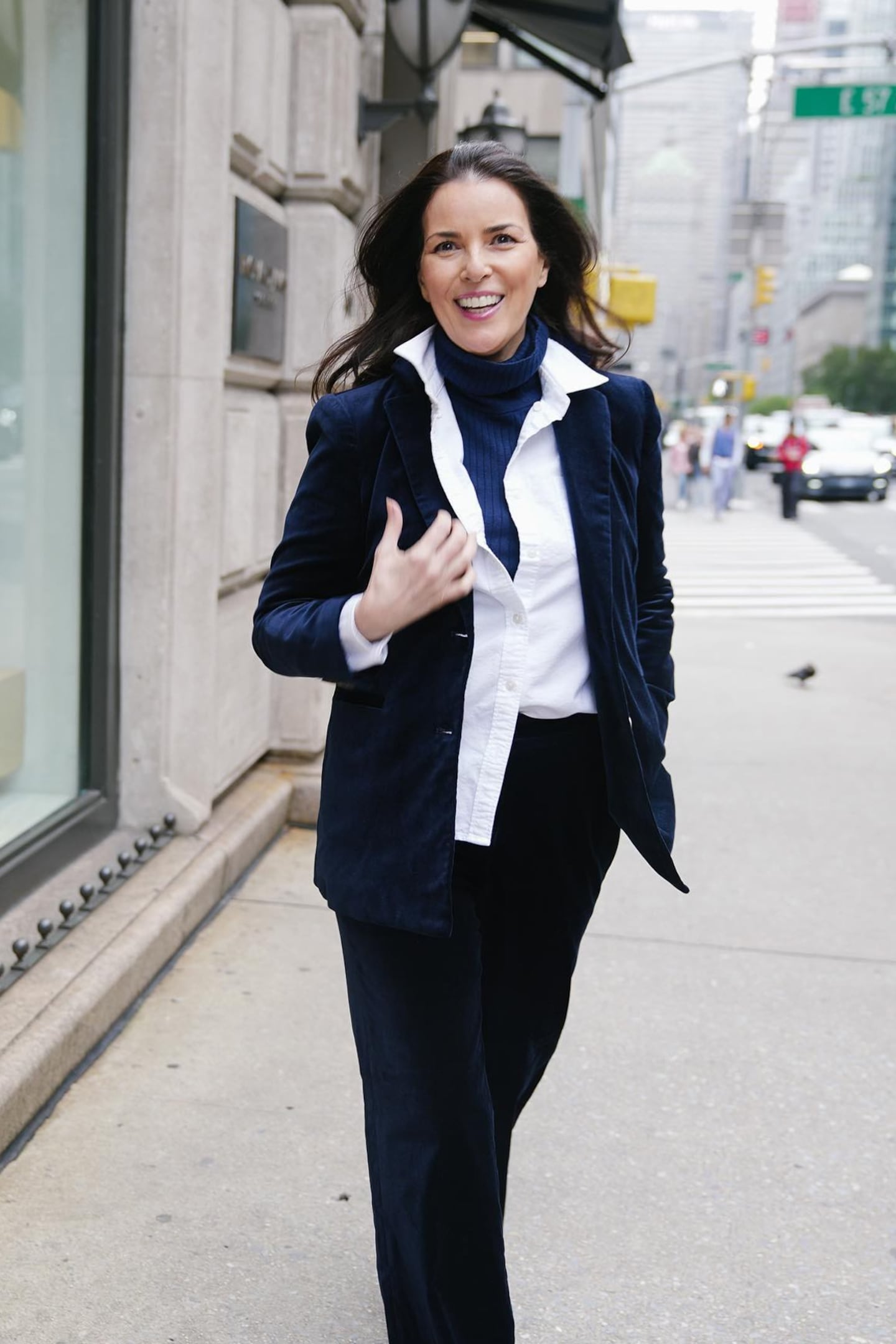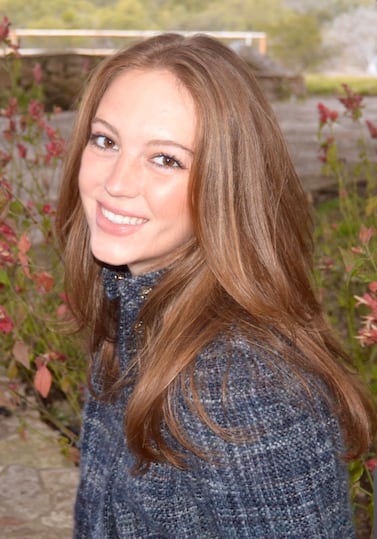
The Business of Fashion
Agenda-setting intelligence, analysis and advice for the global fashion community.

Agenda-setting intelligence, analysis and advice for the global fashion community.

In June 2021, a 55-year-old shopper, headed to Europe for her first post-pandemic trip, walked out the doors of J.McLaughlin’s Naples, Florida store with a suitcase — not a shopping bag — in hand.
“She asked the store manager to pack for her … [the manager] put 20 outfits, three pairs of shoes and literally packed her suitcase and gave it back,” said Mary Ellen Coyne, J.McLaughlin CEO.
That shopper was representative of J.McLaughlin’s demographic: Women between the ages of 45 and 65 at the peak of their spending power and oftentimes pulling back on work, giving them plenty of time to shop. Historically ignored by fashion brands — whether in advertising or product — she’s more loyal to the brands that cater to her. Case in point: J.McLaughlin’s top spenders shopped more than 14 times in 2023, said Coyne.
Fashion may be eager to attract Gen-Z shoppers (and increasingly, Gen Alpha), but it’s Gen-X and Boomers that have real spending power. According to the US Census Bureau, in August 2023, 17.7 percent of the population was 65 or older; a record high that is up from 13 percent in 2010. The number of women over 50 is expected to grow 70 percent by 2050, according to AARP.
ADVERTISEMENT
Not only are older consumers a growing force, they’re an especially valuable one at a challenging time for fashion and retail. While younger groups who have had less time to build a financial foundation are more vulnerable to the impacts of an uncertain economic climate, mature shoppers are more resistant to those ebbs and flows.
“There’s so much upside to appealing to the consumers who have the most money right now,” said Anita Schillhorn van Veen, executive director of strategy for advertising agency McKinney, who has worked with labels including Sketchers and Columbia.
Brands seem to be taking note. This past season saw older models on the runway at shows including Balmain, Proenza Schouler Miu Miu and Batsheva. Loewe put 89-year-old Dame Maggie Smith in an advertisement for its puzzle bag in October and 50-something models Kate Moss and Cindy Crawford have featured heavily in fashion campaigns for Balenciaga (Moss), MCM and Donna Karan (Crawford) this year.
But finding and speaking to older shoppers has only gotten more complicated — it takes more than just a viral TikTok, or even a well-placed TV ad. Some stick to magazines and TV, but most consume across digital, print and brick-and-mortar. They’re savvy and expect a higher level of service and personalisation. It can take sharp targeting and time to reach them in a meaningful way — and messaging based on age has long been passé.
“There’s a forgotten woman out there, there’s a forgotten man out there. They still want to dress, they still want to turn out,” said Andrew McLean, chief executive of clothing company Lands’ End, whose average consumer is 62 years old.
People over 50 — whose children may be grown and are looking towards retirement — like to shop, but aren’t front of mind for most brands. Because there are so few brands speaking directly to the consumer; the brands that do it well reap the benefits.
“We own a significant portion of our customers’ closet … Our most loyal people come in and look every month when there’s a drop,” said Coyne.
The brands that are just introducing themselves to these shoppers, however, must determine how best to reach them. The older the consumer, the more likely it is they engage with traditional media like print magazines, catalogues and TV, said Allen Adamson, co-founder of marketing firm Metaforce.
ADVERTISEMENT
For these more traditional shoppers, catalogues remain a significant sales driver, but so is brick-and-mortar. Sometimes, the two work in tandem. At J.McLaughlin, which has nearly 200 stores (27 of which are located in Florida, a known haven for retirees). Customers bring the catalogue into stores and point out things they’d like to try on, said Coyne. J.McLaughlin’s sales associates look to build relationships with shoppers by routinely checking in with regulars to offer styling advice and answer questions. Brick-and-mortar makes up 75 percent of J.McLaughlin sales.
But these shoppers are also online, especially on Facebook and Instagram. They are even driving fashion and beauty conversation across age groups. J.McLaughlin seeks out influencers in this age group, including stylists Ann Caruso, Angela Howenstein and fashion consultant Filipa de Abreu.
“You’re seeing people in their 40s, 50s, 60s on TikTok talk about fashion and beauty choices in ways that feel real and not ‘Golden Girls.’” said Schillhorn van Veen. “The picture of ageing is so radically different.”
The face of ageing online is changing, but what these consumers want has remained the same. While stunts may drive conversation online among young people, older shoppers know what they like and want to enjoy, said Schillhorn van Veen.
“The older you get the more you’re not as interested in things that drive hype, you want things that will last and be fun and joyful,” said Schillhorn van Veen.
J.Mclaughlin pays close attention to its customers’ lifestyle to inform marketing and product development that feels relevant to their particular, changing interests. The brand started selling shorts with pockets fit for a pickleball as the sport became popular, for example. When it saw customers increasingly interested in needlepoint, the brand shared a tutorial on Instagram.
Shifting the imagery used in catalogues, the site and Instagram from stale item shots to images that are styled based on trend and show products as fitting into life has helped Land’s End sell more products at full price to its regular consumer while attempting to appeal to a new, fashion-first younger one, said McLean. The brand puts out seasonal images that lean into travel, featuring models in jackets on top of mountains in the winter and sailing in the summer.
“We made it more about a brand that fits with your lifestyle … We want to be on every journey with you, whether travel or the vacation you’re on or walking the dog,” said McLean.
ADVERTISEMENT
The demographic is not a monolith — especially as digitally-savvy Millennials start to age up — so how to best market to older shoppers will (and should) differ by brand. The biggest rule for how to sell to older consumers, however? Don’t make it all about age.
“Nobody wants to see themselves as ‘older,’ they want to see themselves as who they are,” said Schillhorn van Veen. At the same time, they aren’t trying to be young, she added: “Don’t treat them like people who want to be Gen-Z.”
J.Crew is the latest brand to tap older stars including Julianne Moore and Diane Keaton for its campaign even as it strives to win over Gen-Z. Will the strategy work?
In what’s being called a ‘Greynnaisance,’ fashion brands are enlisting older models and influencers to entice oft-ignored Baby Boomers and younger fans on social media.
Fashion should design with, not just for, older consumers, argued Sarah Thomas onstage at #BoFVOICES. Watch now.

Joan Kennedy is Editorial Associate at The Business of Fashion. She is based in New York and covers beauty and marketing.
When done effectively, a cultural partnership can rightfully earn its own place in the zeitgeist. But it’s not so easy as just hiring a celebrity to star in an ad campaign; brands must choose a partner that makes sense, find the format that fits best and amplify that message to consumers.
Calvin Klein’s chief marketing officer Jonathan Bottomley speaks to Imran Amed about the strategy behind the brand’s buzzy Jeremy Allen White-fronted campaign.
This month, BoF Careers provides essential sector insights to help PR & communications professionals decode fashion’s creative landscape.
The brand’s scaled-back Revolve Festival points to a new direction in its signature influencer marketing approach.